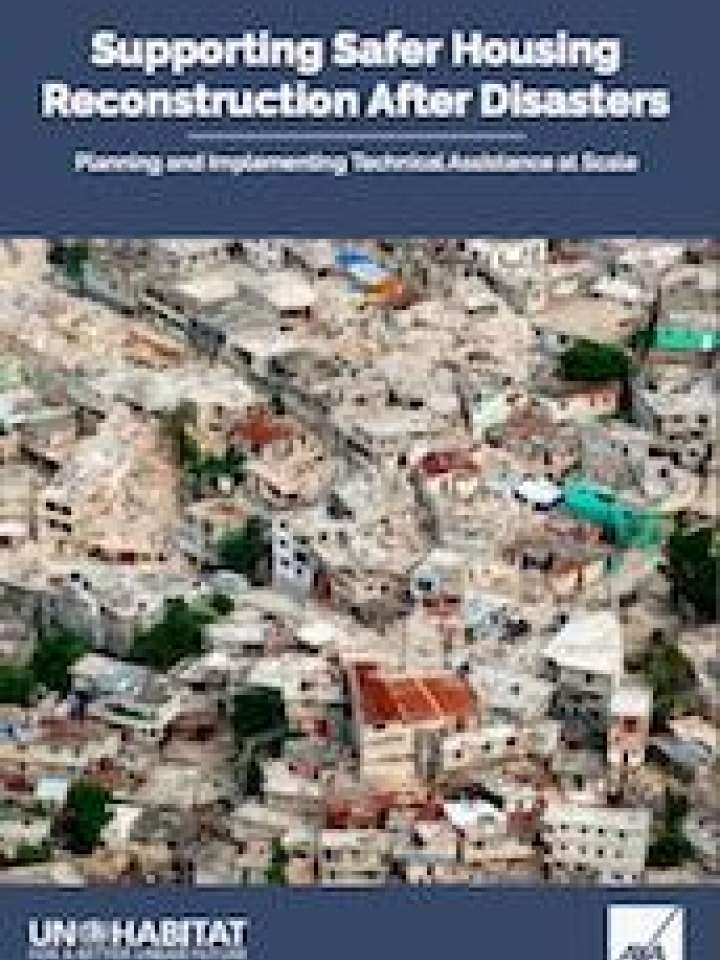Supporting safer housing reconstruction after disasters: Planning and implementing technical assistance at scale
As disasters become increasingly common, it becomes ever more crucial to identify the key components of safer housing (re)construction, in order to build back better and more resilient homes.
This publication builds upon extensive experience in post-disaster housing recovery efforts from all over the world. UN-Habitat has been supporting local government, construction sector professionals, and communities in housing recovery for over twenty years. This document draws on this experience and is aimed at decision makers across four main stakeholder groups (government, assistance agencies, the built environment sector, and disaster-affected communities) to increase the level of knowledge about technical assistance and operationalise its implementation. The guidelines seek to ensure that the reconstruction of housing in disaster-affected communities results in sustainably safer housing.
A key principle that emerges from these lessons is that survivors of crises must be given every opportunity to actively shape their own recovery. Without strategic planning and technical assistance, there is a risk that emergency construction solutions become permanent. Emergency shelter response must already incorporate longer-term elements that will increase resilience to future disasters. Finally, it is paramount that all response efforts put people first: supporting them with technical assistance in the choices they make about their homes, empowering them to build safer and better, and leaving a positive institutional legacy. All of this contributes to mitigating future disasters and maximising both humanitarian and developmental resources.
